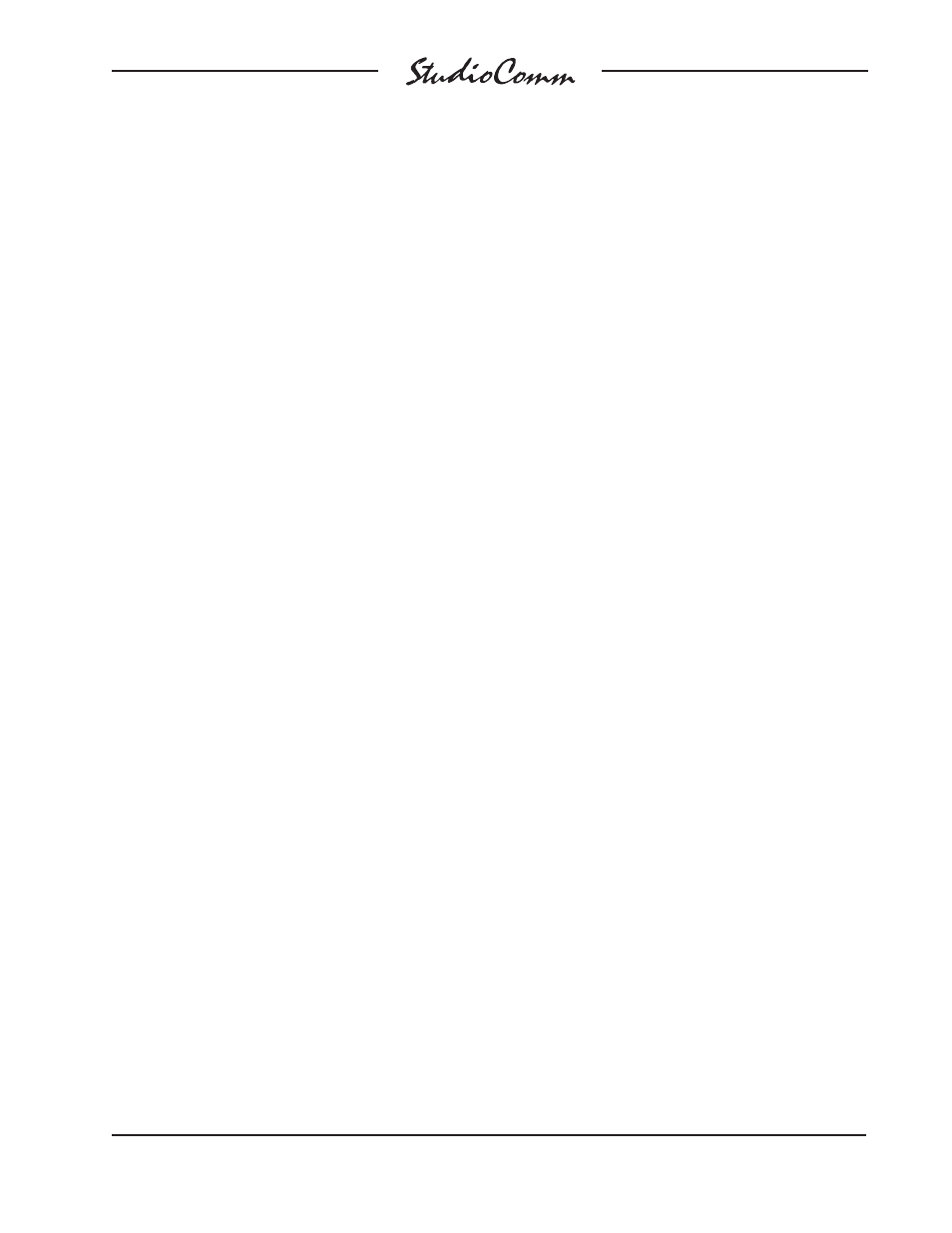Input mute/solo, Output mute – Studio Technologies 780-03 V.4.15 User Manual
Page 39

Model 780-03/790 User Guide
Issue 1, April 2015
Studio Technologies, Inc.
Page 39
for Surround
Displaying the Current Sample Rate
The LFE low-pass filter button is also used
to display the system’s current sample rate
value. Pressing and holding the LFE low-
pass button will cause the current sample
rate value to be shown on the 4-digit dis-
play. The possible values displayed will be
44.1, 48.0, 88.2, or 96.0. This can be use-
ful during troubleshooting or just for gen-
eral interest. Once the button is released
normal display operation will resume.
Rotary Level Control
The rotary level control is used to manu-
ally adjust the post-fader digital and analog
monitor output levels. The level control
provides the ability to adjust the post-fader
digital and analog monitor output level over
a 70-dB range. Technically, the rotary level
control is a 24-step-per-revolution mechan-
ical encoder. The amount of level change
in dB per step (per “click”) will depend on
how quickly the control is turned. When
rotated slowly, each step represents a 0.5-
dB change in level. In this case, to traverse
the entire level range would require rotat-
ing the control more than five full turns. But
the Model 790’s software detects when the
control is rotated more quickly and increas-
es the amount of level change in dB per
step. A little experimentation will allow the
user to acquire a good “feel” for how best
to use the control.
The reference level LED will flash when
the rotary level control sets the output level
to be the same as the stored reference
level. Whenever the rotary level control
attempts to set the output level to be less
than –70.0 dB, the post-fader monitor
output channels will automatically mute.
As previously discussed, the 4-digit display
indicates the mute condition by showing
four dashes (
– – – –).
If the mute all function is active the rotary
level control won’t have an impact on the
post-fader monitor output level. It’s also not
active whenever the reference level func-
tion is active, except if the auto reference
level off function has been enabled. If the
dim function is active, turning the rotary
control will automatically disable the dim
function.
Input Mute/Solo
The input mute/solo functions allow specif-
ic input channels to be selected for indi-
vidual or group mute or “solo” monitoring.
The functions take place electrically “after”
the input source selection and input delay
functions but “before” the LFE low-pass fil-
ter, downmix, output level, and output mute
functions.
The input mute/solo mode and input
mute/solo channel buttons, along with as-
sociated LEDs, work together to provide
excellent operating flexibility. The input
mute/solo mode button allows the user to
select between the mute and solo func-
tions. Going from mute mode to solo mode,
or vice-versa, clears all active mutes or
solos. Pressing the mode button twice
is a legitimate means of quickly clearing
muted or soloed channels. To mute or solo
a channel simply requires pressing one of
the eight input mute/solo buttons. The but-
tons function in a press-to-enable/press-to-
disable “latching” mode. Multiple channels
can be muted or soloed at the same time.
LEDs associated with a muted or soloed
channel will light to indicate that the func-
tion is active.
Output Mute
The two buttons associated with the output
mute function provide a means of directly
